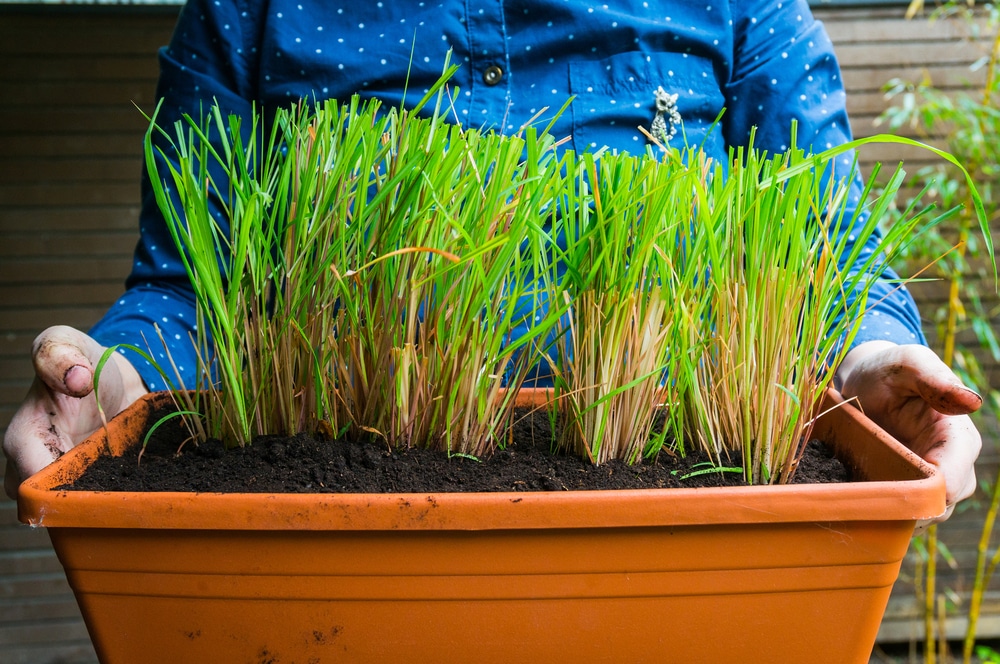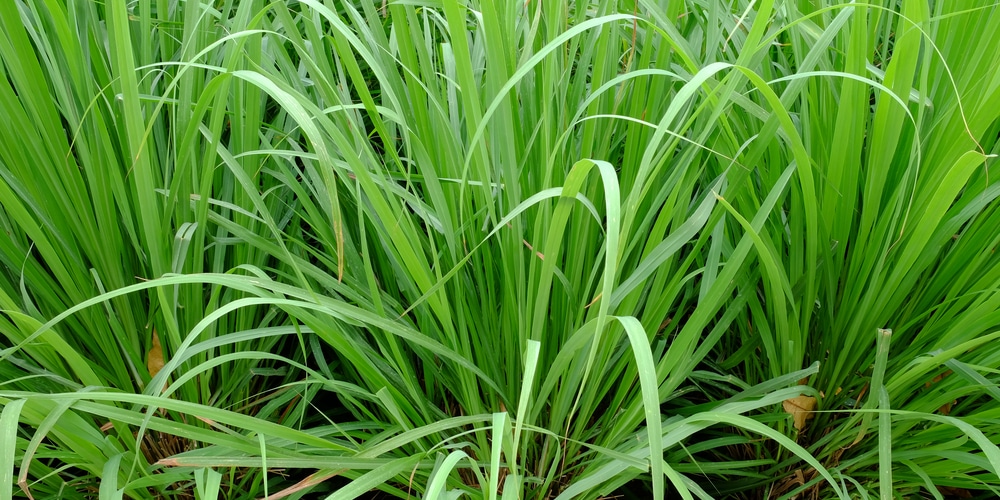If you’d like a steady supply of fresh lemongrass to use in tea and recipes, you’re in luck—it’s easy to grow lemongrass in pots. Read on to discover how to grow and care for this plant.
3 Ways To Grow Lemongrass in Pots
Lemongrass is cheap to plant, a prolific grower, and has few pests that bother it. Below are the three planting methods you can choose when preparing to grow your lemongrass in a pot.
Growing From Seeds
Purchase a packet of lemongrass seeds from your local garden store and use your finger to dig a ¼-inch hole in the middle of your pot. Sprinkle a few seeds into it.
Then, gently cover the seeds with potting soil and water them until the soil has a medium amount of moisture.
You can expect your seeds to germinate within 20 to 40 days. As your lemongrass grows, weed out some of the sprouts to avoid overcrowding. Alternatively, you can move them to different pots.
Growing From Cuttings
Cuttings are another popular way to grow lemongrass. You can grow lemongrass straight from the stalks you purchase at a store. We recommend choosing organic lemongrass.
Then, cut the lemongrass so that approximately only one inch of the base of the stalk remains. Let this stalk sit in a glass of water until the roots start growing, which will take around three weeks. During this time, change the water often.
Once your lemongrass stalk develops roots, plant it in a pot with soil. Since lemongrass grows up to five feet tall and has an extensive root system, only plant one rooted stalk per pot.
Growing From Divisions
Whether you want to divide the lemongrass that you planted in a pot from seeds or take divisions from an established garden, using divisions is a simple way to kickstart your lemongrass collection.
Lemongrass grows in clumps, with each cluster containing several blubs. So, you simply need to use your hands or a small garden fork to pull one bulb away from the clump.
The bulb will already contain its own root system, so all you’ll have to do is replant it into a pot.
Choosing the Right Lemongrass Pot
Lemongrass is a hardy plant, but it grows tall and spreads rapidly. For this reason, you should choose a pot no smaller than five gallons with a 14-inch diameter.
If you plan on keeping your lemongrass indoors, but that sounds too big for you, feel free to use a smaller pot. The only caveat is that you’ll need to divide and repot new plants (if you can’t keep up with using your extra lemongrass, of course).
Finally, be sure the pot has holes at the bottom. Lemongrass likes moist environments, but too much standing water will lead to root rot.
Harvesting Your Lemongrass
Once you’re the proud owner of potted lemongrass, you can enjoy it year-round, as lemon grass grows back after harvesting. It’s safe to start harvesting lemongrass leaves once they reach at least one foot tall.
You have two options for harvesting—pulling a section of the lemongrass up from the base or cutting the leaves about an inch high from the soil.
Not only can you use the top green part of lemongrass for tea and recipes, but you can eat the buttery-like white bottom part of the plant.
Tips for Caring for Lemongrass in Pots
Below are some must-know lemongrass care requirements to ensure your plants grow well in their pots.
- Use loamy soil
- Give it six hours of direct sunlight
- Keep soil moist with water
- Apply manure tea for nutrients
Finally, be mindful of whether keeping your potted lemongrass outdoors is safe. Lemongrass thrives in tropical conditions, so they only grow outside in USDA zones 8 to 11.
Some people enjoy moving their lemongrass pots indoors and outdoors. Should you do this, keep an eye on the weather, for your plants will die if they encounter temperatures at or below 40 degrees Fahrenheit.
Are You Ready to Plant Potted Lemongrass?
Growing lemongrass in pots is rewarding, given how fast these plants grow. Plus, you won’t have to worry about weeding a garden or worrying about lemongrass spreading and overtaking your other plants.
So, go ahead and buy a pot so you can start growing lemongrass.


